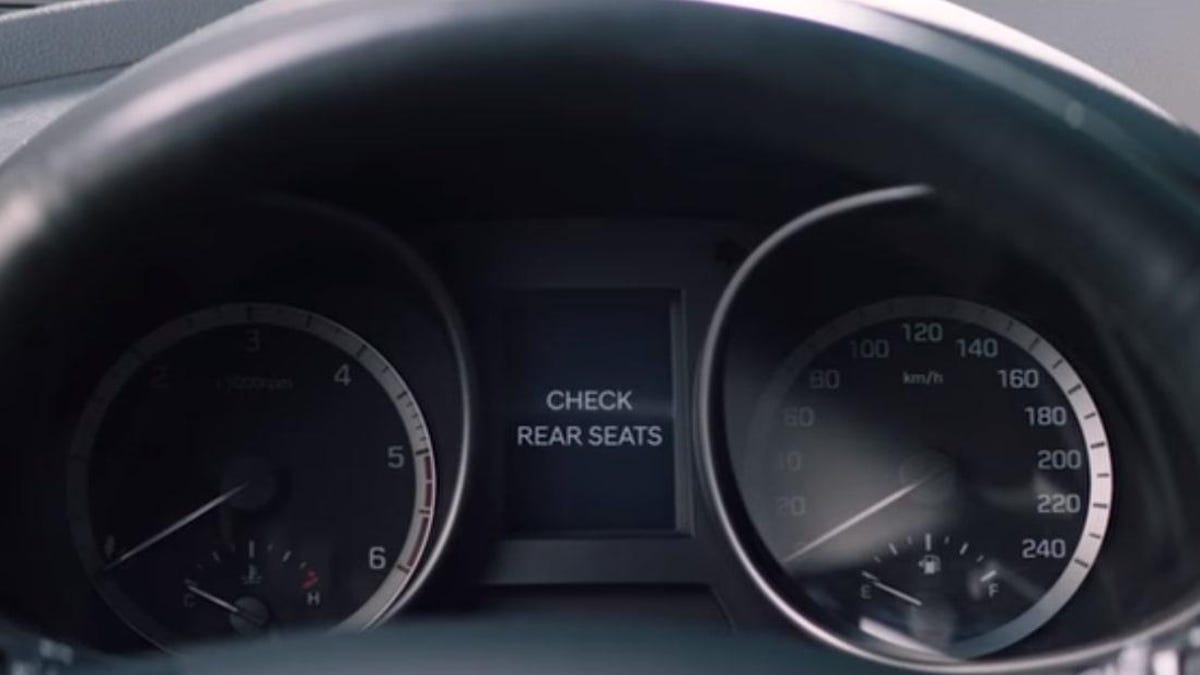Hyundai will make Rear Occupant Alert standard by 2022
Yet another automaker attempts to rid the world of hot-car deaths.
Automakers have been standardizing a number of safety systems in their vehicles over the last several years. Most OEMs tend to focus on avoiding crashes with included tech like automatic emergency braking and pedestrian detection, but many are also worried about what could happen if a child or pet is inadvertently left in the back seat.
Hyundai on Wednesday announced that it will voluntarily standardize its Rear Occupant Alert system on "most" of its new vehicles by 2022. There's a second, even more capable version of this system that the company says will also see expanded inclusion in the future, as well. As it turns out, July 31 is National Heatstroke Prevention Day, so Hyundai picked a good day to make this announcement.
The more basic version of Rear Occupant Alert detects if a rear door was opened or closed prior to starting the car, and if that's the case, it will remind the driver through a message in the gauge cluster to check the rear seats for anything that shouldn't be left behind. This is more or less the same system that other automakers use.
The more advanced version of Rear Occupant Alert involves more than just a new "if" statement buried somewhere in the car's code. In addition to the door-based technology, Hyundai also embeds an ultrasonic sensor into the car to detect movement in the second row. If movement is detected after the vehicle is shut off and locked, it will honk the car's horn and send a notification to the driver's phone through Hyundai's Blue Link connected-car system -- provided the car is equipped with Blue Link and its service is active. Automakers haven't really adopted systems like these en masse, in part because it incurs a greater cost than simply checking for opened doors.
Right now, the basic Rear Occupant Alert is standard on the 2020 Santa Fe and Palisade SUVs, with the ultrasonic version available as an option. The ultrasonic system is available on the 2019 Santa Fe, as well. Later this year, when the 2020 Sonata launches, it will have the simpler system standard, too. It's unclear which Hyundai vehicles are slated to make this standard in the future, but we'll definitely call it out as it happens.
GM is one of the pioneers of this tech, having added Rear Seat Reminder to more than 20 models for the 2017 model year. Nissan followed by making Rear Door Alert (there are a lot of silly proprietary names for this tech) standard on multiple cars in 2018. The 2020 Subaru Ascent added a rear-seat reminder system as standard equipment, too. As of May of this year, a bill has been floating around the US Senate that would seek to mandate this technology to reduce hot-car deaths, but nothing has come of it yet.


